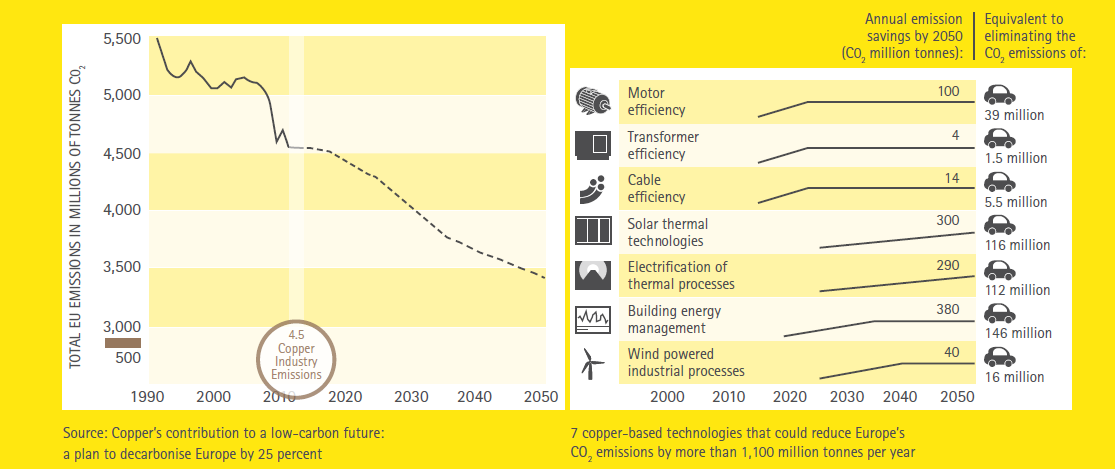
Decarbonisation
If we are to move towards a carbon-neutral economy, we need more renewable energy and more sustainable transport such as electric vehicles. Copper is the foundation of a low-carbon value chain and a key resource for these technologies that we rely on for decarbonisation. For example, copper is present in most renewable energy sources. Products that contain copper tend to work more efficiently because copper is the best base conductor for heat and electricity.
The global adoption of minimum energy performance standards (MEPS) in industrial plants and household appliances could create $350 billion in economic activity through reduced energy costs, and reduce global electricity consumption by 10 per cent. Renewable sources provide almost a quarter of the world’s electricity, and copper plays an important role in generating it as efficiently as possible – with minimal impact on the environment.
Copper reduces CO2 emissions by being the material of choice for insulated electrical wire and cable, busbars, voltage transformers and electric motor windings. It plays an important role in the miniaturisation of high-tech electronic applications. The use of copper therefore not only helps to reduce CO2 emissions, but also lowers the amount of energy needed to generate electricity.
Increasing the use of copper can generally affect the environmental impact of power-consuming devices such as motors and transformers. Studies show that adding one tonne of copper to such systems helps save 100 to 7,500 tonnes of CO2 emissions and 500 to 50,000 MWh of primary energy over their lifetime. By 2030, copper could thus reduce the global carbon footprint by 16 per cent. Today, on average, less than five tonnes of CO2 are emitted to produce one tonne of copper.

Climate Strategy 2050
How do we achieve the goals?
- Improving the energy efficiency of plants and systems – e.g. by using copper materials – should be the first priority in efforts to reduce CO2 emissions.
- Higher recycling volumes will also reduce the overall CO2 footprint of the metals industry on a life-cycle basis, as recycling processes require less energy than extraction and primary production. Copper is exemplary in this regard, as it is 100 per cent recyclable without loss of quality or properties.
- Improve the recyclability of metals in existing and new applications to reduce the life-cycle carbon footprint and increase Europe’s domestic raw material supply for low-carbon technologies. The development of advanced metal alloys supports this goal.

The global copper industry
- emits less than 0.15 per cent of the world’s total annual CO2 emissions (approx. 35 billion tonnes CO2).
- consumes about 0.1 per cent of the world’s total annual final energy consumption (about 375 billion GJ).
- recycles almost three billion m3 of water per year.
Are you looking for a different content?
Sustainability
The life of copper is infinite and has no end phase.
More